Sarvestan Sasanian Palace | Magnificant Ancient Persian Architecture
The Sarvestan Sasanian Palace is an impressive example of ancient Persian architecture, showcasing the skill and creativity of the Sasanian Empire.
Situated in the scenic landscape of Fars Province, this palace is thought to have been built during the reign of King Bahram V in the 5th century. Known for its distinctive stone structures, majestic arches, and elegant domes, the palace reflects the artistic achievements of the era. Visitors are drawn to its historical significance and the intricate design that speaks to the refined tastes of Sasanian royalty, making it a fascinating destination for those interested in Iran’s rich past.
History and Background of Sarvestan Palace

The Sarvestan Sasanian Palace, constructed during the Sasanian period, reflects the empire’s ambition and advanced architectural capabilities. It is commonly associated with King Bahram V, known as Bahram Gor, who ruled during a prosperous time in Persian history. The palace's design suggests it served as a hunting lodge or a royal retreat rather than a fortified structure, highlighting the Sasanian focus on leisure and sophistication. Set against the backdrop of the desert landscape, this palace has played a crucial role in showcasing the luxurious lifestyle and artistic achievements of the Sasanian elite.
| Read more: Persian Empire - Facts & History of Achaemenids
Sarvestan Palace Architectural Significance
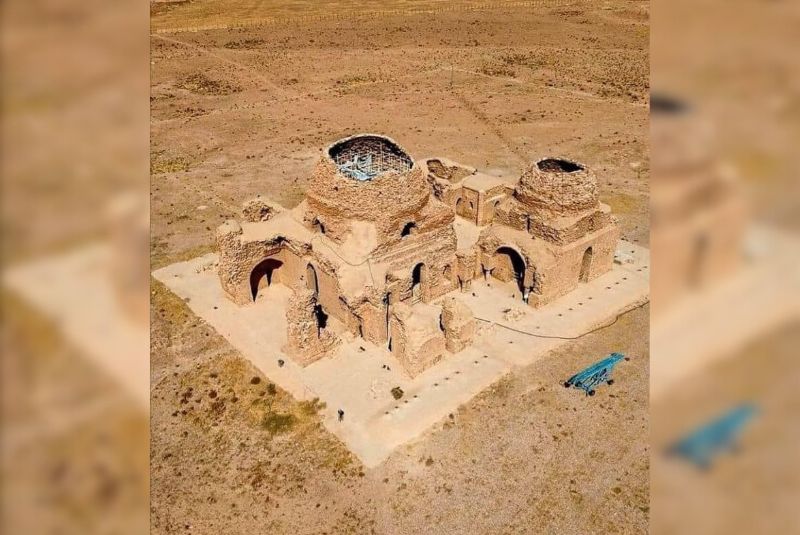
The architecture of the Sarvestan Sasanian Palace is a striking example of Sasanian innovation, blending functionality with elaborate design. Its layout includes a central hall topped with a grand dome, flanked by smaller rooms and courtyards that showcase the use of intricate stone carvings and decorative motifs. The palace’s arches and columns reflect advanced construction techniques that influenced subsequent Persian architecture, including the early Islamic era. The use of space, light, and decorative stonework demonstrates the Sasanian commitment to creating monumental structures that not only served practical purposes but also conveyed power and artistry. Each element of the palace, from its structural harmony to its detailed embellishments, speaks to a time when Persian architecture was at the height of its creativity.
Layout of the Palace
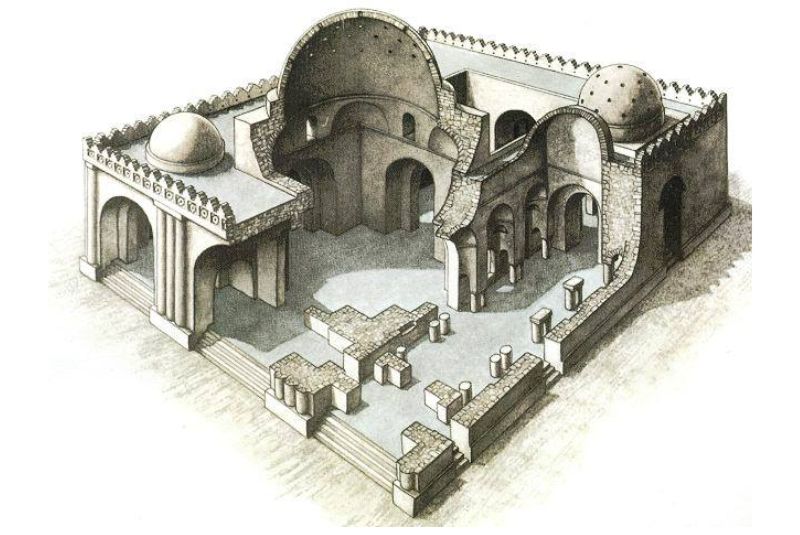
The layout of the Sarvestan Sasanian Palace is a striking blend of open and enclosed spaces, reflecting the grandeur of Sasanian design. At its core lies a large central hall crowned with an impressive dome, a signature element of Sasanian architecture. This hall is flanked by smaller rooms, corridors, and interconnected courtyards, creating a harmonious flow throughout the structure. The palace's layout was designed to accommodate both private and public functions, with the central dome hall likely serving as a gathering space for royal events or ceremonies. The strategic placement of arches and columns adds to the palace’s imposing yet elegant appearance, with each structural element carefully crafted to enhance the overall design.
Construction Techniques
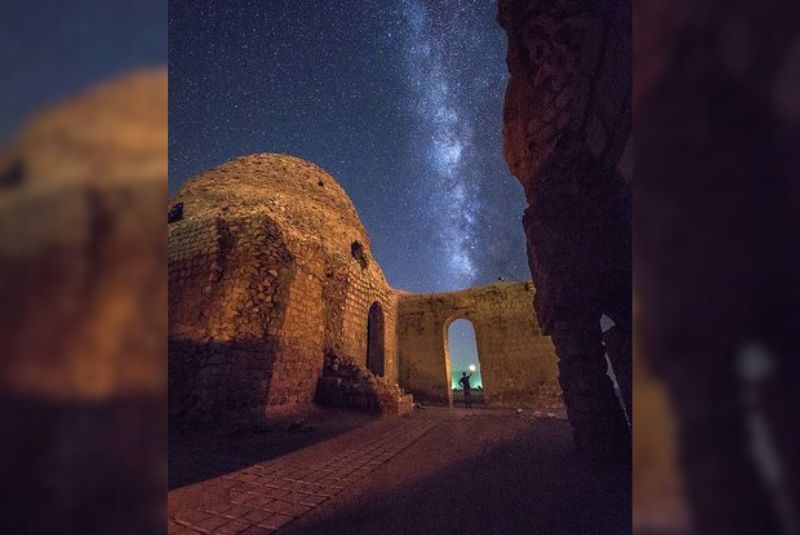
The construction of the Sassanid palace of Sarvestan showcases advanced techniques that were pioneering for its time. Builders used large stone blocks and mortar to create sturdy walls, while the use of mudbrick and plaster helped shape the palace’s finer details. The dome, one of the earliest examples of such construction in Persian architecture, was built using a technique that distributed weight evenly, allowing for a grand, open space without the need for supporting columns in the center. Compared to other Sasanian sites like the Bishapur Palace and Ardashir’s Palace, the Sarvestan Palace stands out for its innovative use of arches and the integration of semi-circular and pointed designs, illustrating the evolution of Sasanian architectural methods.
| Related: Firuzabad - Gor City
Decorative Elements

Though much of the intricate detailing has weathered over time, remnants of carvings, decorative stonework, and ornate plasterwork still hint at the palace's original splendor. Carved patterns, floral motifs, and symbolic imagery are scattered throughout the site, particularly around doorways, arches, and window frames. These artistic touches not only served an aesthetic purpose but also communicated cultural and royal significance. The combination of functional design with decorative artistry is a hallmark of Sasanian architecture, reflecting a blend of practicality and visual appeal that set the style apart from other periods.
Exploring Sarvestan Sasanian Palace

Visitors to the Sassanid palace of Sarvestan are often captivated by its key features, each offering a glimpse into the architectural and cultural achievements of the Sasanian era. The central dome hall is undoubtedly the palace's main highlight, showcasing the impressive engineering skills of ancient builders. This expansive, domed space serves as the focal point of the palace, and its grand scale is a testament to the architectural ambition of the period. Surrounding the central hall are smaller rooms and chambers, each with unique architectural details that add to the palace’s charm. The outer courtyards, once lush with greenery, provide an open space that contrasts beautifully with the enclosed halls, inviting visitors to explore every corner of this historical site.
Guided vs. Self-Guided Tours
When visiting the Sarvestan Sasanian Palace, tourists have the option of guided or self-guided tours. Guided tours offer in-depth insights into the history, architecture, and cultural significance of the palace, making them a great choice for those interested in a more informative experience. Knowledgeable guides bring the ruins to life with stories of the Sasanian dynasty and the daily life of the palace’s inhabitants, providing context that enhances the visit. For those who prefer to explore at their own pace, self-guided tours allow for a more personal experience, where visitors can wander through the ancient halls and courtyards while soaking in the atmosphere. Informational plaques and maps are often available to help self-guided visitors navigate the site and learn about its key features.
Significance of the Sassanid Era

The Sasanian Empire, which ruled from 224 to 651 AD, is often regarded as one of the most influential periods in Persian history. Known for its advancements in art, architecture, and engineering, the empire left a lasting legacy that shaped the cultural and architectural landscape of Iran. The Sasanian era was marked by grand palaces, intricate stonework, and the development of iconic architectural elements like domes and arches, many of which can be seen at the Sassanid palace of Sarvestan. This era also played a crucial role in the spread of Zoroastrianism and the flourishing of Persian culture, setting the stage for future empires and influencing art and architecture across the region.
| Suggestion: Sassanid Taq Kasra - World's Largest Single-Span Brick Vault
Legends and Stories
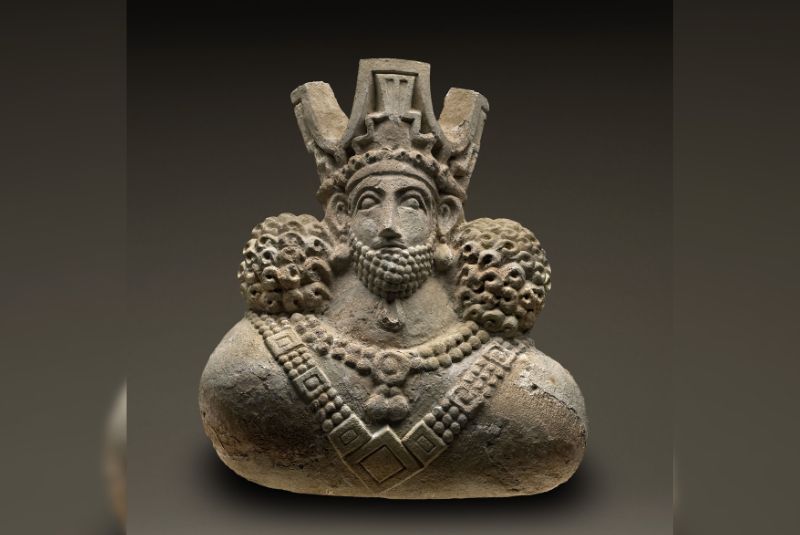
The Sarvestan Sasanian Palace is surrounded by intriguing tales that add to its allure. One popular legend suggests that the palace was a royal hunting lodge or retreat for King Bahram V, a Sasanian ruler known for his love of music, poetry, and outdoor adventures. It’s said that the king would host lavish gatherings and entertain guests in the palace’s grand dome hall. Stories of royal feasts, hunting expeditions, and courtly life fill the site with an air of mystery, inviting visitors to imagine the vibrant past that once animated these ancient walls.
| Suggestion: Why Did Persia Change Its Name to Iran?
The Sassanid palace of Sarvestan Location and Access
The Sarvestan Sasanian Palace is located approximately 90 kilometers southeast of Shiraz in Fars Province, Iran. The palace is easily accessible from Shiraz by car, making it a popular day trip for those exploring the region. Visitors can choose from several transportation options, including renting a car, hiring a taxi, or joining organized tours that provide guided visits to the palace. For those using public transport, buses and minibusses run from Shiraz to Sarvestan town, from where the palace is just a short drive away.
Best Time to Visit
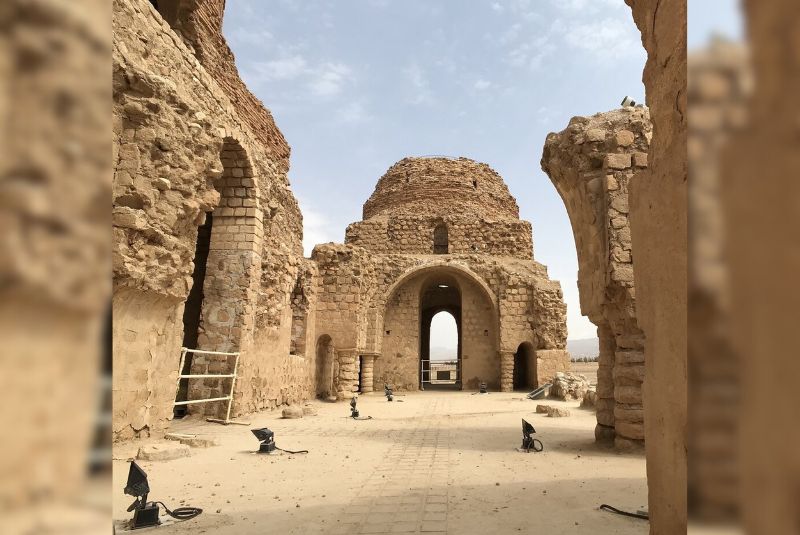
The best time to visit the Sarvestan Sasanian Palace is during the spring (March to May) and autumn (September to November) when the weather is mild and pleasant. During these seasons, visitors can comfortably explore the site without the intense heat of summer or the chill of winter. The palace is generally less crowded on weekdays and during early morning hours, offering a more serene experience. It’s advisable to check local weather forecasts before planning your visit, as temperatures can vary significantly depending on the season.
Entrance Fees and Facilities
The entrance fee to Sarvestan Sasanian Palace is generally affordable, with discounts available for students and children. While the site itself has limited facilities, basic amenities such as restrooms and a small visitor kiosk are usually available. Visitors are encouraged to bring water, sun protection, and comfortable walking shoes, as the site involves some walking across uneven terrain. Nearby, the town of Sarvestan offers additional services, including small shops, cafes, and places to rest, making it easy to plan a full day of exploration.
Nearby Attractions
Qal'eh Dokhtar
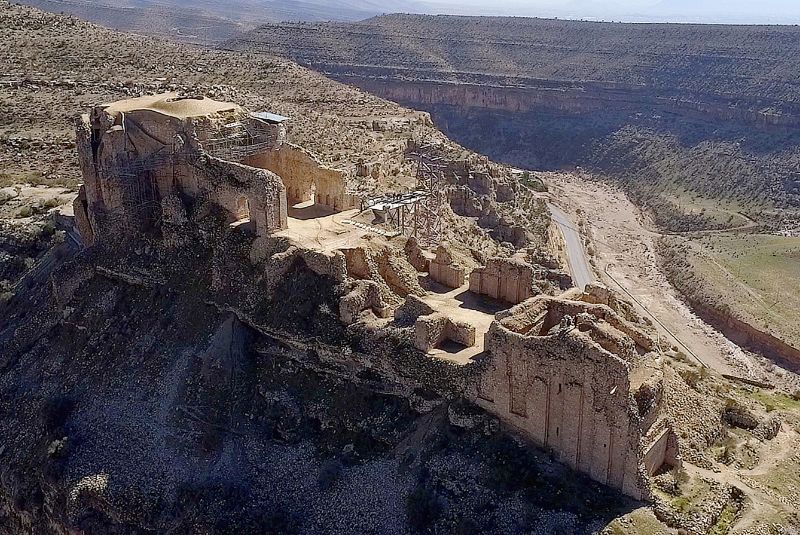
Qal'eh Dokhtar, meaning "The Maiden’s Castle," is a striking ancient Sasanian fortress perched on a steep hilltop near the Sarvestan Sasanian Palace. Built by King Ardashir I, the founder of the Sasanian Empire, this fortress showcases early Sasanian military architecture with its thick defensive walls, watchtowers, and strategic positioning. Visitors can enjoy panoramic views of the surrounding valleys and mountains, making the climb up to the fortress both a historical journey and a visual delight.
| Read more: Iran's Beautiful Castles - Top 20 Historical Fortresses You Must Visit
Bishapur
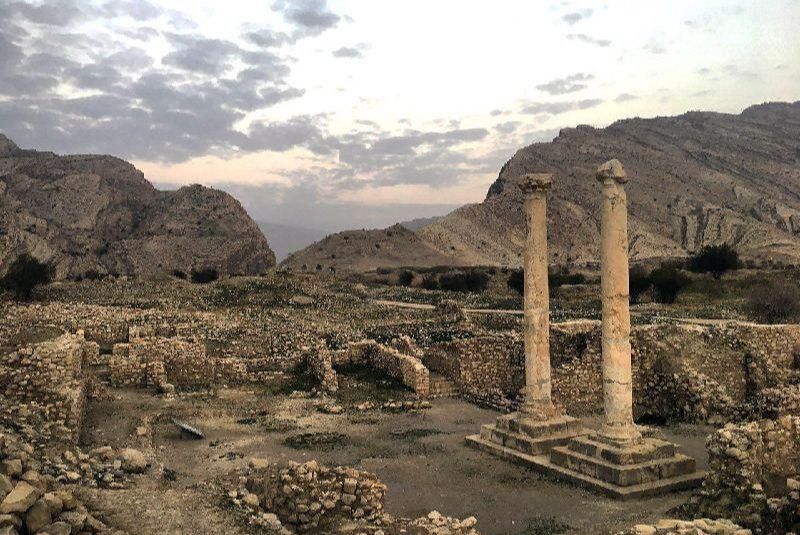
Bishapur, once a thriving Sasanian city, now stands as a captivating archaeological site filled with remnants of grand palaces, temples, and intricate rock reliefs. Located about 140 kilometers west of Shiraz, Bishapur was founded by King Shapur I and reflects a blend of Persian and Roman architectural styles. Highlights include the impressive rock carvings depicting royal victories and the Anahita Temple, dedicated to the ancient goddess of water and fertility. Exploring Bishapur offers a fascinating glimpse into the daily life and artistic achievements of the Sasanian Empire.
Naqsh-e Rostam

Naqsh-e Rostam is an ancient necropolis that houses the tombs of several Achaemenid kings, including Darius the Great and Xerxes I, carved into the sheer rock face. Located near the ancient city of Persepolis, this site is also renowned for its Sasanian rock reliefs that depict scenes of royal triumphs, coronations, and battles. The grandeur of these monumental carvings provides a dramatic backdrop to the surrounding landscape and offers valuable insights into the power and artistry of the Sasanian and Achaemenid empires.
Tang-e Chogan
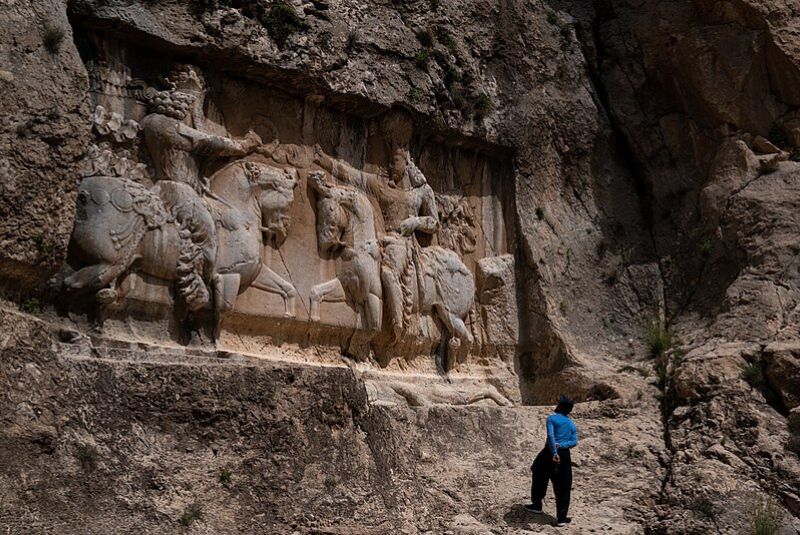
Tang-e Chogan is a picturesque valley near Bishapur that is famous for its rock reliefs depicting royal Sasanian hunting scenes and courtly ceremonies. The reliefs vividly portray kings on horseback, hunting wild animals, and celebrating victories, showcasing the might and leisure pursuits of the Sasanian rulers. The valley’s natural beauty, combined with its historical significance, makes Tang-e Chogan a must-visit for those interested in ancient Persian art and culture.
| Also read about: Taq Bostan - Sassanid Rock Reliefs in Kermanshah, Iran
Final Takeaway
The Sarvestan Sasanian Palace stands as a remarkable piece of Iran’s ancient history, offering a window into the architectural brilliance and cultural richness of the Sasanian era. Its unique design, fascinating legends, and stunning surroundings make it a must-visit destination for those seeking to explore the depths of Persian heritage.
Share your story!
Comment below and let us know about your Experience.
Your story inspires others!


Comment
Leave a Comment